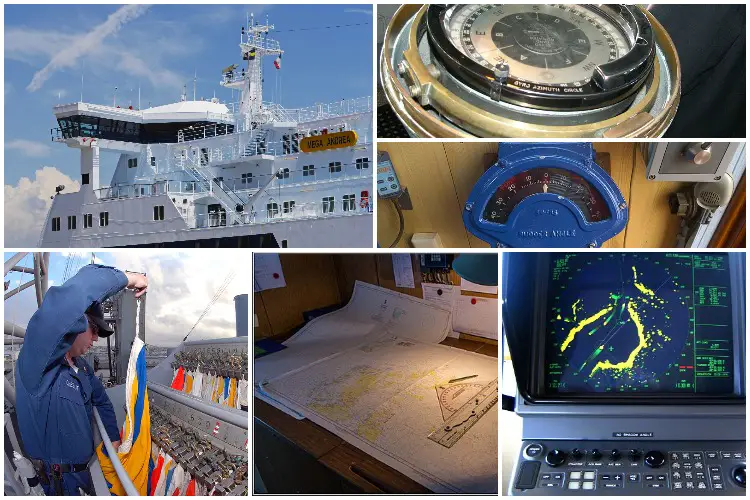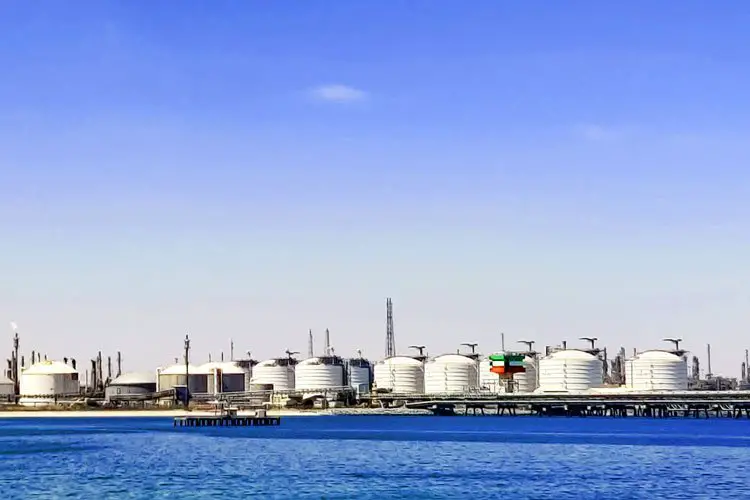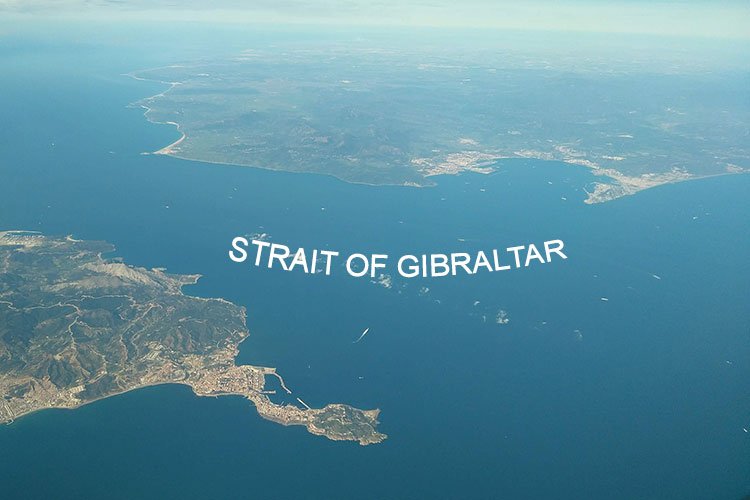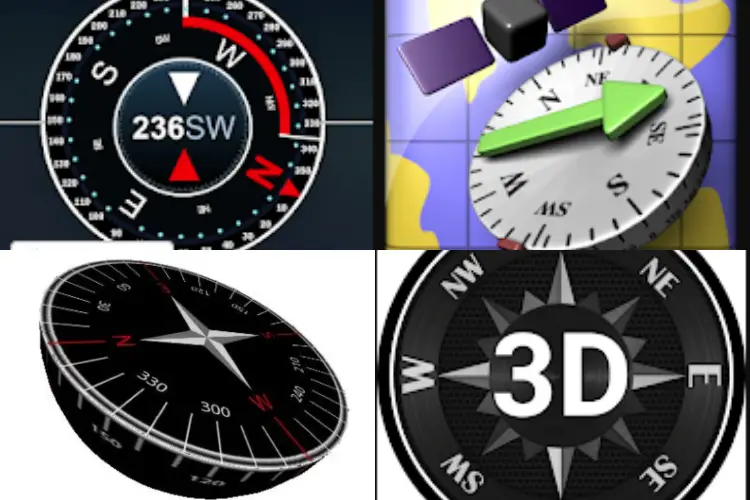Fascinating Gulf Of Aden Facts
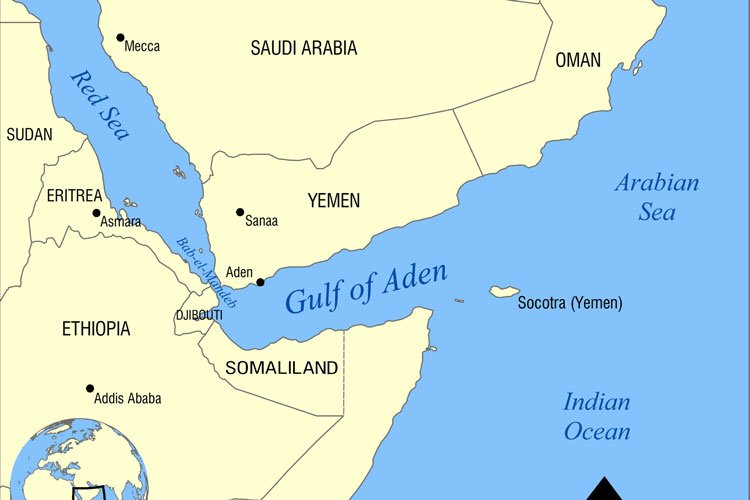
The Gulf of Aden is also known as the Gulf of Berbera is a deepwater gulf that connects Yemen to the north, the Arabian Sea to the east, Djibouti to the west, the Guardafui Channel to the south, and Socotra (Yemen) and Somaliland to the south. It connects to the Red Sea in the northwest through the Bab-el-Mandeb strait, and to the Arabian Sea in the east. It narrows into the Gulf of Tadjoura in Djibouti to the west.
The Gulf of Aden is a vital section of the Suez Canal maritime route connecting the Mediterranean Sea and the Indian Ocean’s the Arabian Sea. Every year, around 21,000 ships pass through the Gulf. This route is frequently utilized to transport oil from the Persian Gulf, making the Gulf an important waterway in the global economy. It has, however, been a component of global trade since ancient times, when it was used by Arabs, Greeks, and Romans to travel to Asia.
The namesake Aden in Yemen is one of the few prominent cities near the Gulf of Aden. Shuqrah, Zinjibar, Mukalla, Ahwar, and Balhaf are some of Yemen’s other cities. Djibouti, Berbera, and Bosaso are cities in the Horn of Africa.
Interesting Facts About Gulf of Aden

1) Origin Of The Name
The term “Gulf of Aden” is a relatively recent and modern addition to the gulf’s name. The gulf is called after the Yemeni port city of Aden. The gulf, however, was once considered a part of the Erythraean Sea. Various writers, notably Arab navigator Ibn Majid and Kurdish geographer Abu’l-Fida, referred to it as “The Gulf of Berbera.” In the Sahil area, Berbera is a major port city. The city of Aden is said to be as old as human history, and it may be where Cain and Abel were buried.
2) History Of The Existence of The Gulf Of Aden
Massive emigrations from Africa occurred between 85,000 and 75,000 years ago, and the Bab-el-Mandeb straits were likely witnesses. Mitochondrial DNA research has proven beyond a shadow of a doubt that the original humans lived on the African continent and spread around the world via a series of emigrations that began with the crossing of these straits.
Since ancient times, the Gulf of Aden has been a part of global trade. Arab and Indian sailors, as well as ancient Greeks, took advantage of the seasonal monsoon winds. Following the conquest of Egypt, Roman sailors began using the Red Sea route to Asia, which increased the volume of trade involved sufficiently to warrant a guidebook of trade routes called Periplus Maris Erythraei.
The Erythraean Sea, as it was called at the time, included the Gulf of Aden, the Indian Ocean, and the Red Sea. However, few traders circled the Horn of Africa and crossed the Gulf of Aden to continue down Africa’s coast. The path to India was both quicker and more profitable.
However, trade between the Sabeans at the Arabian Peninsula’s tip and Africa’s emerging civilizations predates Roman times. The kingdom of Saba, which was responsible for a variety of agricultural advancements, including irrigation and the adoption of the ox-drawn plow, was the culmination of a succession of kingdoms in southern Arabia. The plow is considered to have made its way to Ethiopia via the Gulf of Aden, and the Sabean influence on the Ethiopian language is undeniable. Sabean in style and substance are inscriptions unearthed in the Ethiopian highlands dating from the seventh century B.C.E. These components of civilization were absorbed by the growing kingdom of Axum, which was located in the Ethiopian highlands.
3) Gulf Of Aden During The British Rule
Sultan Muhsin bin Fadl of the neighboring state of Lahej gave the British 75 square miles (194 km²), which included Aden, in 1838. The British East India Company landed Royal Marines in Aden the next year to garrison the territory and prevent pirate attacks on British shipping bound for India. The Suez Canal, Bombay (Mumbai), and Zanzibar, all key former British colonies, are almost equidistant from the port.
In the ancient world, Aden served as an entrepôt and a way-station for sailors, where supplies, particularly water, were restocked. It became required to replace coal and boiler water in the mid-nineteenth century. As a result, Aden was able to secure a coaling facility at Steamer Point. Aden would be ruled by the British until 1967.
Aden was known as the Aden Settlement until 1937 when it became part of British India. The island of Perim was added to its original boundaries in 1857, the Khuriya Muriya Islands in 1868, and the island of Kamaran in 1915. The settlement was separated from India in 1937, and it became a British crown colony. Following the fall of the Suez Canal in 1956, Aden became the British’s principal base in the region.
The British intended to progressively integrate the numerous nations of the region in preparation for ultimate independence in order to stabilize Aden and the surrounding Protectorate from the designs of North Yemen. Against the preferences of much of Aden’s population, the colony of Aden was absorbed into the Federation of the Arab Emirates of the South on January 18, 1963, and the Federation was renamed the Federation of South Arabia (FSA).
The Aden insurgency was a revolt against British rule. The National Liberation Front (NLF) launched a grenade attack against the British High Commissioner, which triggered the state of emergency. Britain stated in 1964 that it would offer the FSA independence in 1968, but that the British troops would stay in Aden.
Despite British troops’ intervention, widespread rioting by the NLF and the opposition Front for the Liberation of Occupied South Yemen (FLOSY) broke out in January 1967 and lasted until mid-February. The British withdrew on November 30, 1967, leaving Aden and the rest of the FSA under NLF control.
4) Gulf Of Aden And The Red Sea
The Red Sea and Gulf of Aden (RSGA) Region is well-known for the diversity and importance of its coastal and marine habitats, as well as its geopolitical, economic, and social importance. The expansion in the human population in the coastal zone, as well as the rapid rise in economic growth, are major challenges to the long-term stability of the marine ecosystem, putting significant pressure on the environment.
The primary goals of the PERSGA purpose and activity are to protect the Red Sea and Gulf of Aden habitats from pollution and to manage their resources responsibly. PERSGA program components are made up of a collection of specialized programs that are linked to and supported by a collection of generic multipurpose programs.
5) Economy Of The Gulf Of Aden
Three countries—Yemen, Somalia, and Djibouti—share the Gulf of Aden, and their exclusive economic zones extend into the ocean body. Djibouti’s EEZ is less than 10,000 square kilometers, while Somalia’s is 831,059 square kilometers. Yemen’s EEZ is roughly 509,000 square kilometers. The Gulf of Aden is a significant shipping route, with over 20,000 ships traveling through it each year, making it a vital sea route for the global economy.
The Persian Gulf oil is the most important commodity moved across the gulf, accounting for around 11% of all petroleum transported by sea. The Gulf of Aden is home to about $60 billion in exports and $50 billion in imports from India alone. Aden, Mukalla, Djibouti City, Balhaf, and Berbera are among the important harbors along the gulf.
Europe accounts for more than 80% of all international maritime traffic passing through the Gulf of Aden.
6) Shipping In The Gulf Of Aden
Many oceanographic research ships and survey ships have been through the Gulf of Aden in the last five years as a result of a renewed interest in the Indian Ocean. The majority of these ships are equipped with deep-sea echo sounders, and the resulting data has allowed a new contour chart of the bathymetry of the Gulf and its eastern extension into the Arabian Sea to be created.
Several of these ships also used seismic refraction techniques to assess the total intensity of the Earth’s magnetic field, gravitational field, heat movement, and crystal structure in the Gulf of Aden. The geophysical data can be compared to the structural trends shown by bathymetry to learn more about the Gulf’s geological history and how it relates to current theories on continental fracture and drift.
7) History Of Shipping In The Gulf Of Aden
Aden developed as a ship fuelling station in the 1800s, with coal and water supplies for the early steamers. After the Suez Canal opened in 1869, port services flourished, and by the 1950s, Aden had become one of the world’s largest ship bunkering, tax-free shopping, and trade ports. Ships berthed in the Inner Harbor and the wharves were transported by barges. Cargo was transported to and from regional ports by coastal vessels and dhows.
With the Suez Canal closed until 1975, Aden faced fierce competition from new ports in the region and shifting trade patterns in the 1970s. Modern freight demands necessitated the construction of new quays in Aden. These were constructed in the late 1980s. Aden now possessed the capacity and equipment to handle all forms of dry cargo at deep alongside berths served by modern container cranes after more than 150 years of economic operation.
Significant and positive developments have occurred in Yemen since its unification in 1990, resulting in quick privatization, increased investment, and increased manufacturing output to fulfill domestic and international demand. Aden’s benefits for container transshipment have long been known. The Aden Container Terminal (ACT), located on the North Shore of Aden’s Inner Harbor, was constructed and built to handle the world’s largest container ships. This facility was opened in March 1999, gives world-class container-handling capabilities to the port. The throughput of ACT is likely to rise.
8) Development Of The Gulf Of Aden
On the basis of current understanding regarding continental margins, continental drift, and mid-ocean ridges, it should be able to define the Gulf of Aden’s development stage by stage. Synclinal folding began in the Hadramaut as the Eocene sea receded eastwards and the sediments emerged, peaking during the Upper Eocene. The uplift of the Somali Plateau’s northern edge may have been part of the same folding, with the entire system forming part of the elevated arch or dome that marks the intersection of the African Rift Valley, the Red Sea, and the Gulf of Aden.
During this time, the Red Sea trend fault system in Somalia evolved. The rising limb of mantle convection could be responsible for the uplift. Block faulting occurred along the axis of the embryo Gulf, either concurrently as in the case of the African Rift valley, or later (Miocene in Somalia), giving rise to the Gulf of Aden fault scarps of Somalia and the east-west faults of Southern Arabia. The graben would then accumulate sediments from the mountains on each side, truncating and trapping river systems that would then flow eastwards along the graben into the sea. The coastal plains and continental shelves are remnants of this graben.
Faulting near the Gulf’s western end, where it meets the Red Sea, may have resulted in the enormous lava flows that today blanket most of Yemen and Ethiopia. The sub-crustal movements also generated forces that pushed the Arabian block north-northeast while simultaneously rotating it anticlockwise. The down-faulted block gave along two sets of fracture lines, one parallel to land faults and the other parallel to the continental edge. In an echelon pattern going between Socotra and the Kuria Muria Islands, the line of separation between the two continental blocks followed along with both sets of these fractures.
9) The Central Rough Zones In The Gulf Of Aden
A rough topographical zone occupies the middle third of the Gulf of Aden, changing from a single valley to a 100-mile-wide range of mountains as it progresses from west to east. The zone is characterized by a single deep valley that runs slightly south of the west right into the coast at the Gulf of Tadjoura in the extreme west, i.e. west of 45 E.
This valley is 500 feet deeper than the shelves around it. There are no continuous valleys between 45 and 46 degrees E, and the zone is defined by individual peaks and ridges. Between 46 and 54 E, the rugged central zone is dominated by parallel ridges and valleys trending 030-210: the distance between ridge crests is usually 30 miles, and their relief compared to valleys is often about 1000 feet.
The ridges abruptly terminate, and a line connecting these terminations and containing most of the solitary hills defines the zone. The valleys are frequently deeper than the nearby main trough, despite the fact that there is no barrier stopping them from being filled with material from the coast.
In fact, one valley (at 13° 15′ N, 49° 00′ E) has an abyssal plain fed from the north by a canyon. This indicates that the valleys (and thus the ridges) were built after the main trough had accumulated the majority of the silt. The lineation in the central rough zone is still extant east of the Alula-Fartak trench, though it is less well defined. The sounding data between 54 and 57 E is insufficient to construct any lineations.
10) Fishing In The Gulf Of Aden
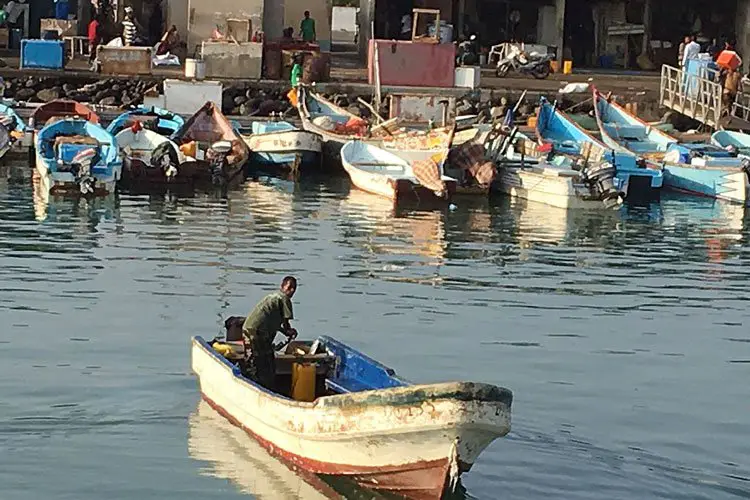
For thousands of years, fishermen have fished the region’s waterways sustainably, and in many places, they still do so with little technological development. These fishermen have created traditional resource management practices, such as rotating fishing efforts among reefs to avoid overfishing and stock decrease.
Fishing communities preserve vast knowledge of the sea, fishing techniques, and the habits of species. Pearl diving is still practiced in a few locales, albeit the number of divers is diminishing. Local fishermen are being displaced by foreign labor, fish prices are falling, and competition from industrial fisheries is increasing, therefore this component of the region’s cultural heritage is at risk in some places.
Illegal fishing by vessels operating outside of their normal waters is also a prevalent occurrence. Due to a lack of efficient supervision, surveillance, and enforcement of legislation, foreign and domestic vessels have engaged in widespread poaching and habitat devastation. There’s also the issue of national overfishing and fishing concentration in limited seas, which results in a decrease in the number and diversity of fish as well as habitat degradation in some situations.
11) The History Of The Proposal Of Bridge In Gulf Of Aden
In 2007, a Dubai-based developer announced proposals to use an American construction firm to build a bridge connecting Yemen and Djibouti across the Bab el Mandab strait. By connecting the bridge to new rail and road building centers and networks in Africa and the Arabian Peninsula, the stated goal is to promote economic opportunity and stability on both sides of the Red Sea.
The president of the company given the contract has said, “It is very, very critical to connect the African nations and their products and crops right to the Middle East. The Middle East is extremely wealthy in money and oil, but we lack quite a lot of crops and services. If you open up this [transportation system that provides access into the heart of Africa] then you can create jobs by moving products, moving services. You can ignite economic development just by the transportation element. The bridge is really critical.”
12) Various Issues Related To The Gulf Of Aden
Several grave issues are threatening the region’s biodiversity and richness. Today, supertankers ply this historic trade route, delivering oil and other hazardous goods all over the world, with the risk of spilling oil or other harmful chemicals into the sea. As a result of oil and wastewater pollution, those waters, with their distinct habitats and animal and plant species, are increasingly threatened.
Coral reefs act as natural obstacles for ships passing through the Red Sea on their way to or from the Suez Canal, posing navigational risks. In certain spots, the coral has grown so large that only small passages remain, which can be dangerous. Reefs partially obstruct many southern harbors. Oil tankers are always present on such routes, increasing the potential of a disaster if one of them collides with a coral reef. This brings us back to the ever-present issue of oil, sewage, and chemical effluent pollution.
Humans are also a threat to the region’s aquatic life. Turtles are commonly caught by fishermen for their meat and eggs. In some instances, local recreational beach use causes nesting turtles to be disturbed or killed. The region’s shark resources are heavily harvested. There is increasing evidence of depletion in some areas, which is ascribed to a lack of control over national shark fisheries and illegal fishing by fishermen who also catch sharks with gill nets and long lines, causing coral reef damage.
13) Industrial Activities In Gulf Of Aden
In addition to industrial and urban pollution, waste disposal, surface, and groundwater usage, and saltwater intrusion into aquifers, industrial and urban development pose a threat to the region’s marine life. Agriculture also poses a threat to the maritime environment due to increased sedimentation and the possibility of pesticide and fertilizer residue pollution.
14) The Climate Of Gulf Of Aden
The Gulf of Aden’s climate is characterized by severe heat and aridity. The monsoons in this area are reversing. The prevailing wind across the Arabian Sea during the NE monsoon (October to May) is northeasterly, turning to easterly in the Gulf of Aden and southeasterly near the Strait of Bab El Mandab and the Southern Red Sea. During the SW monsoon (June–September), the strongest winds are from the WSW over the Gulf of Aden and the Arabian Sea, and from the NW over the Southern Red Sea.
Monsoon (rain-bearing) winds, eddies, and a high-salinity surface layer complicate the gulf’s flow pattern. The surface temperatures of the Gulf of Mexico’s waters are typically between 77 and 88 degrees Fahrenheit (25 and 31 degrees Celsius). The gulf’s marine life is diverse and abundant, both in terms of quantity and variety of species.
15) Geography Of The Gulf Of Aden
The Sheba Ridge, an extension of the Indian Ocean ridge system that runs through the middle of the gulf, is the most prominent relief feature of the gulf’s landscape. The ridge’s rugged topography includes a well-defined middle valley that is constantly offset by faults running northeast to southwest.
The Alula-Fartak Trench, formed by the greatest of these faults, contains the gulf’s maximum recorded depth of 17,586 feet (5,360 meters). At the mouth of the gulf, the Sheba Ridge is surrounded on both sides by sediment-filled basins that reach depths of 13,000 feet (3,900 meters). To the west, the ridge gives place to the Tadjoura Trench, a relatively shallow east–west-trending valley.
The spreading of the seafloor away from the Sheba Ridge axis is the key factor in the gulf’s geologic creation. In the late Eocene or early Oligocene Epoch, the African continent and the Arabian Peninsula divided along their current borders (i.e., about 35 million years ago). Since then, they’ve drifted away in a direction parallel to the faults of the gulf.
The Gulf of Mexico is a part of a complicated water system. Gulf waters come into the Red Sea through the Bab el-Mandeb (Bb al-Mandab) Strait, replacing large-scale evaporation, which happens at a rate of 82 inches (210 cm) each year. Monsoon (rain-bearing) winds, eddies, and a high-salinity surface layer complicate the gulf’s flow pattern. The surface temperatures of the Gulf of Mexico’s waters are typically between 77 and 88 degrees Fahrenheit (25 and 31 degrees Celsius).
16) Piracy in the Gulf of Aden
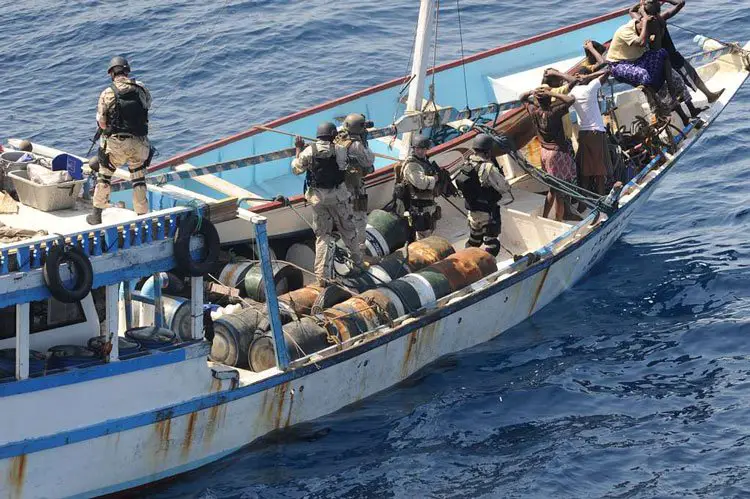
Piracy, terrorism, and Illicit trafficking are quite rampant in this region. Especially, Somalia is a launchpad for pirates and terrorists. Piracy imposes considerable burdens on governments and the marine industry as they take precautions to defend themselves from being attacked or hijacked, despite the fact that those economies are currently more directly harmed by the attacks. Increased military presence in high-risk locations, rerouting ships to avoid the Gulf of Aden, paying higher insurance premiums, hiring private security guards, and installing non-lethal deterrent devices are only a few examples of these actions.
The expenses of these activities, in the end, are passed on to the taxpayer and the customer. In order to combat piracy in the Gulf of Aden, the carrier has two options: avoid the area by rerouting ships via the Cape of Good Hope, or accept the danger of operating ships in the area by improving vessel security. For lower-value cargoes, such as some bulk commodities, rerouting may be a viable option. The additional delay may be unacceptable to the shipper for high-value consumer goods or things required for just-in-time manufacture.

